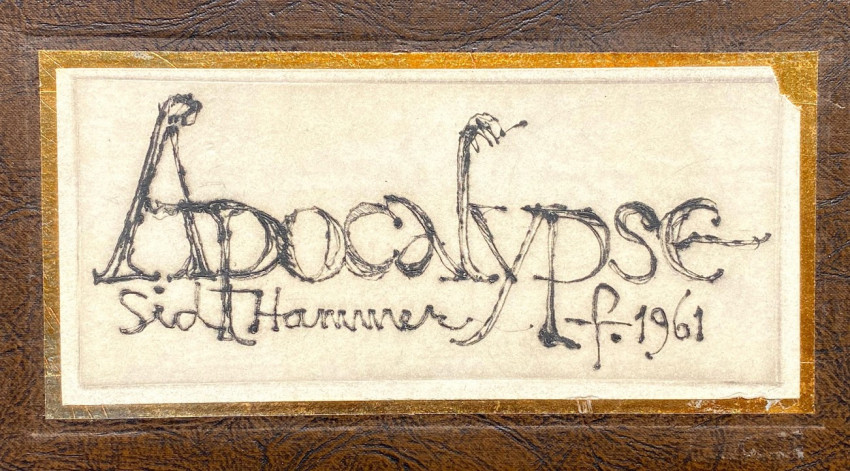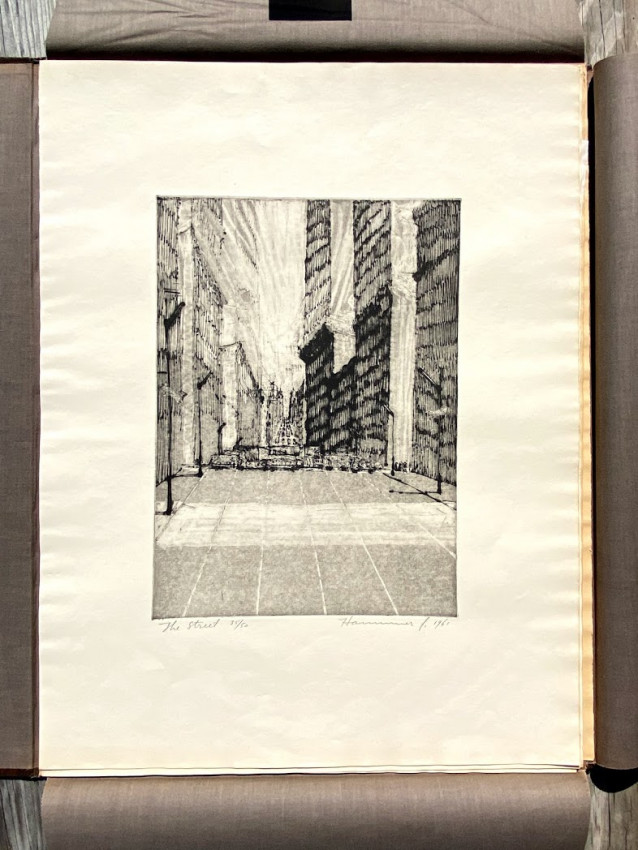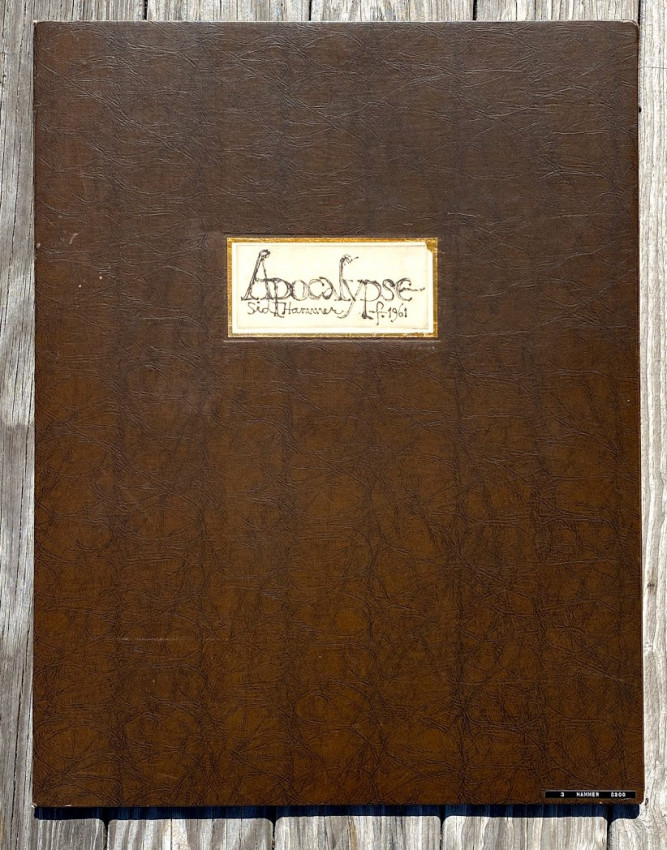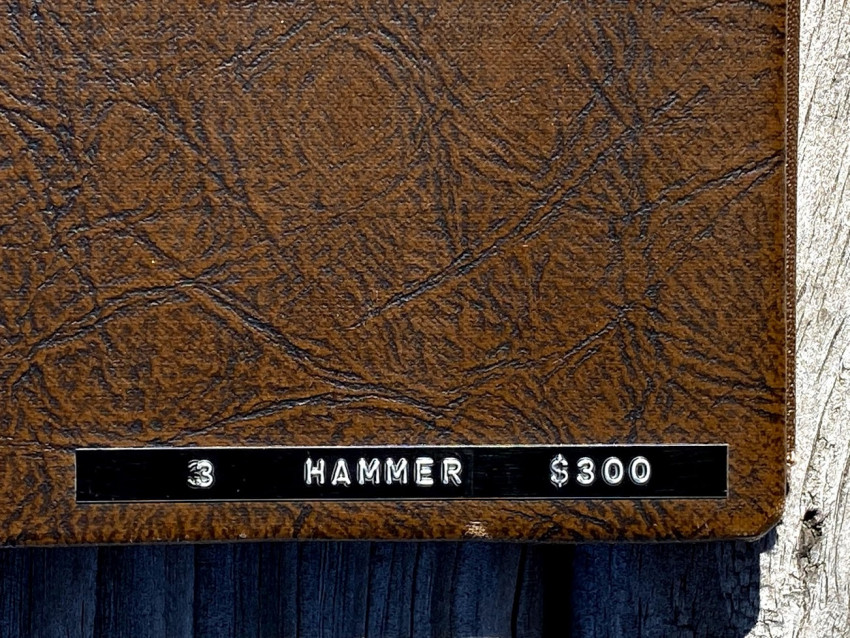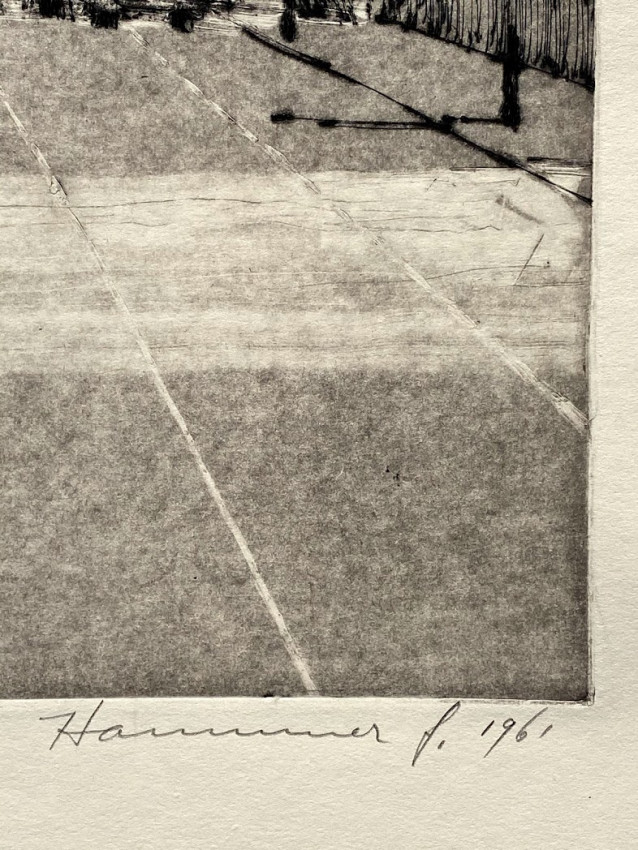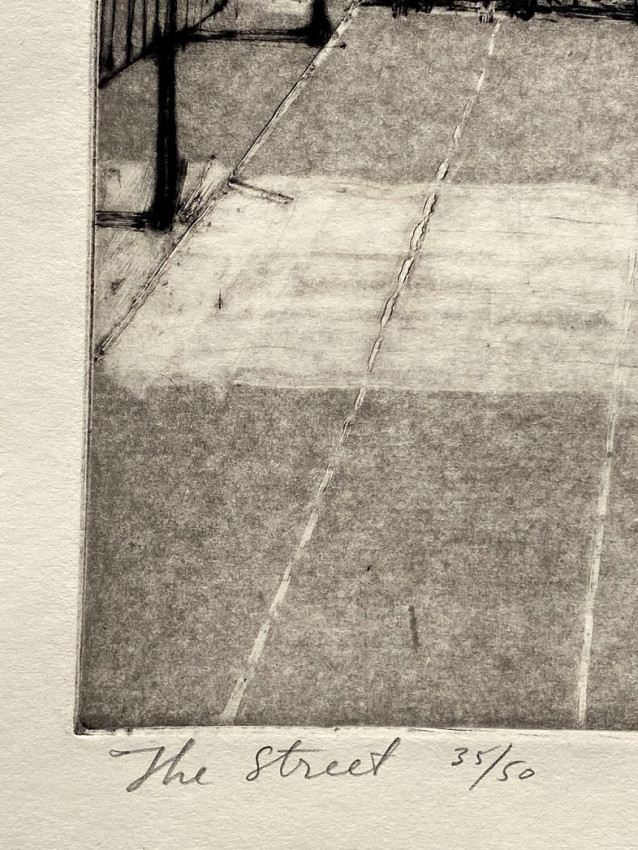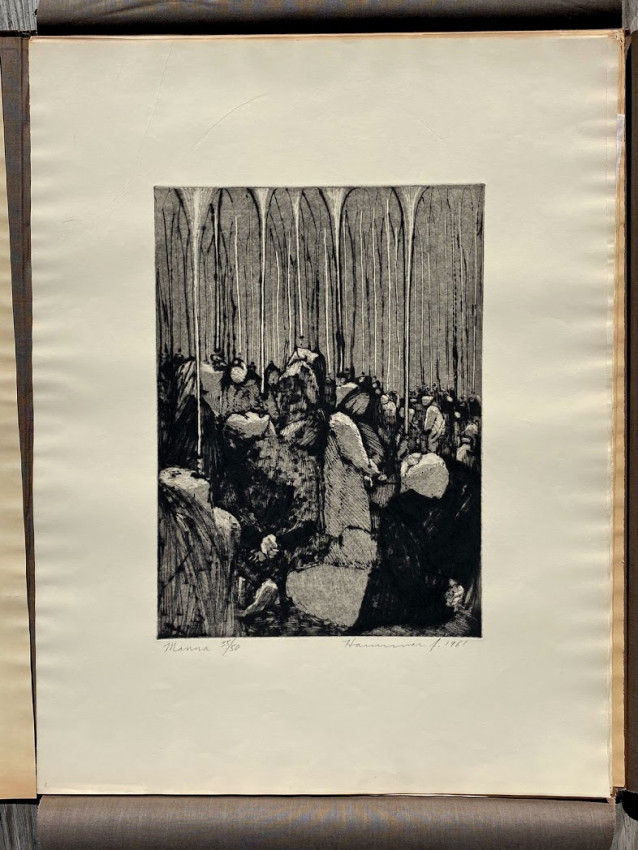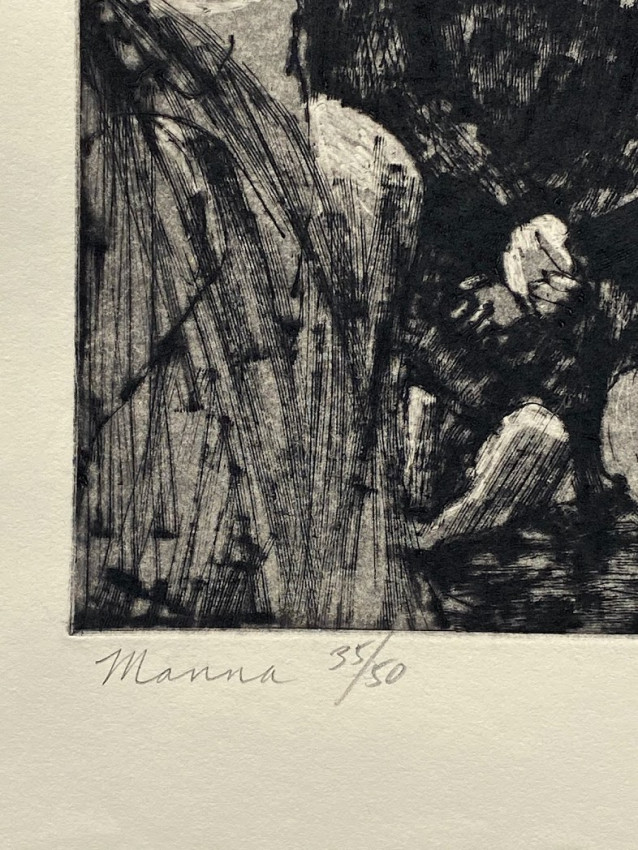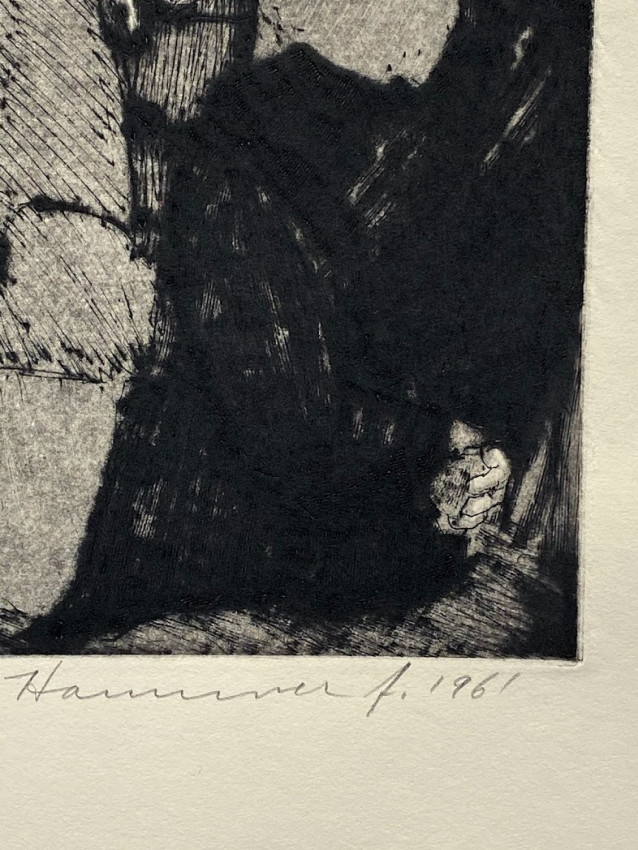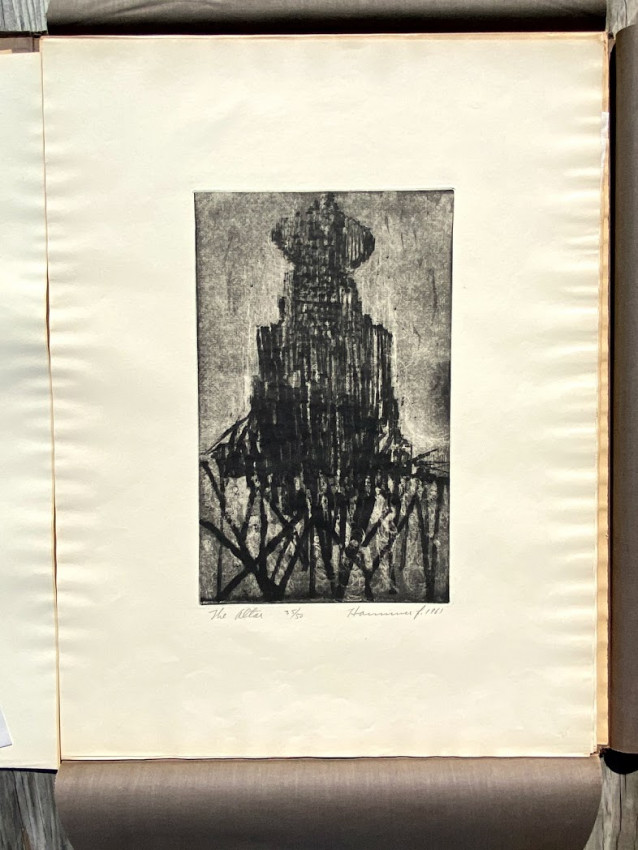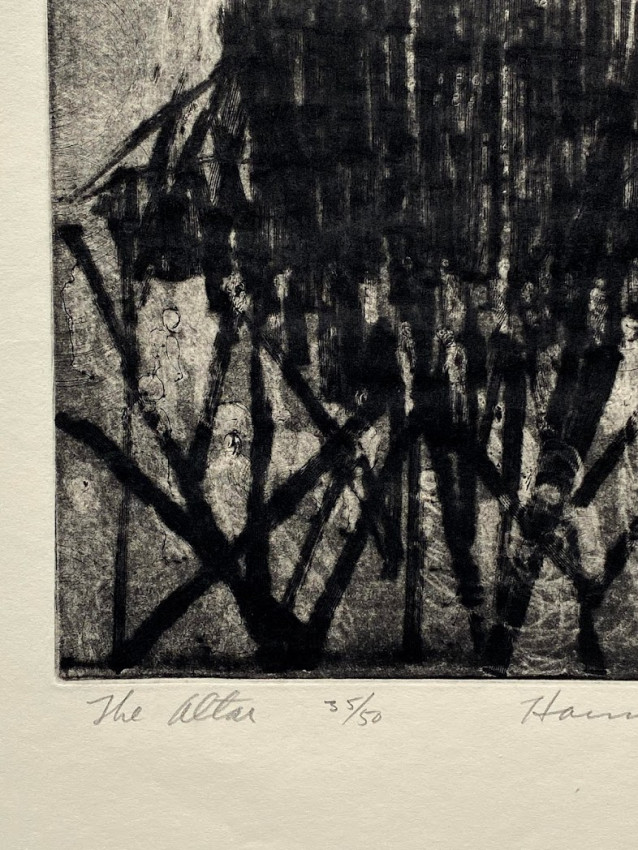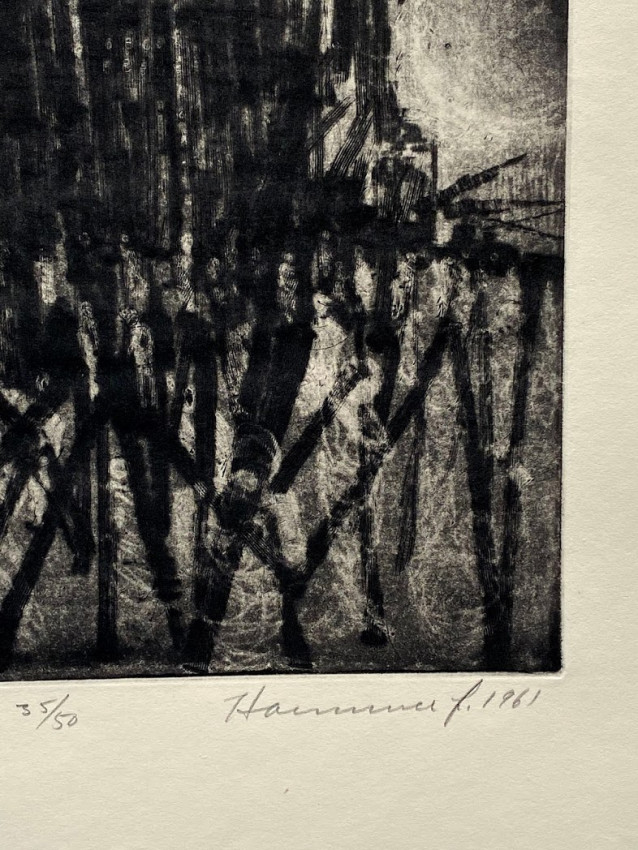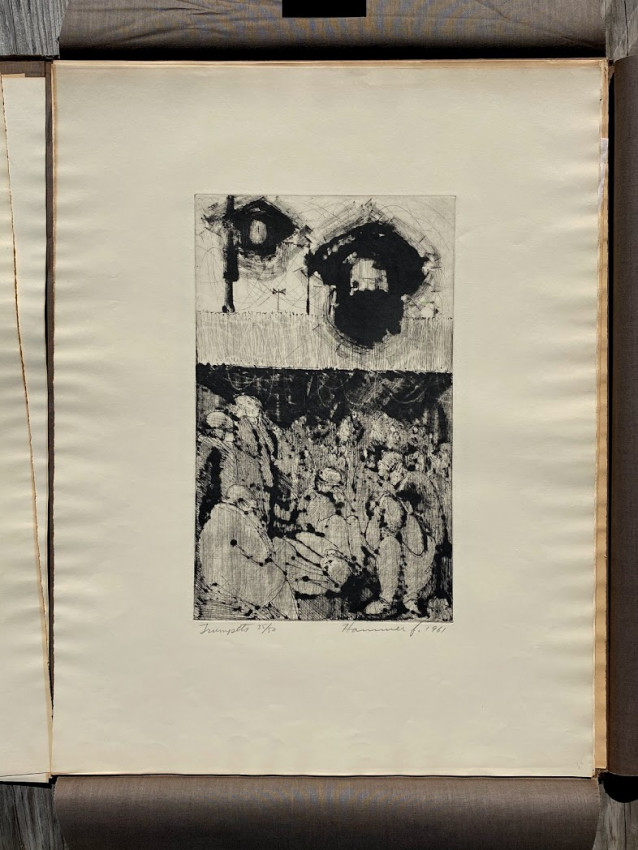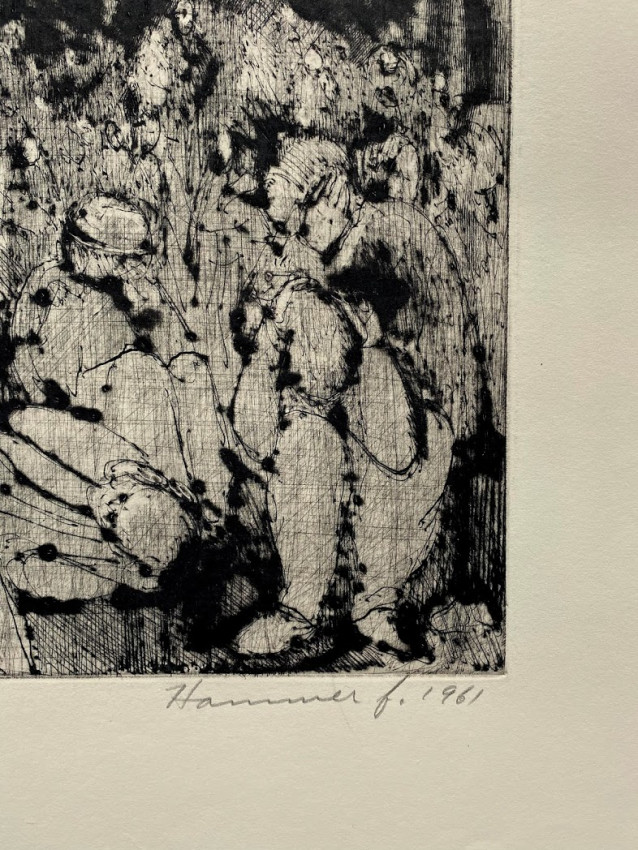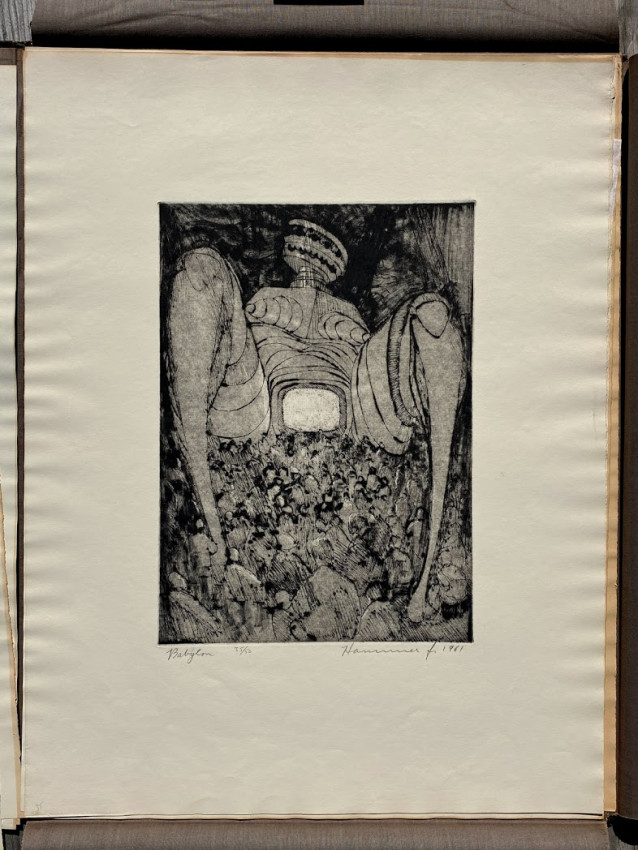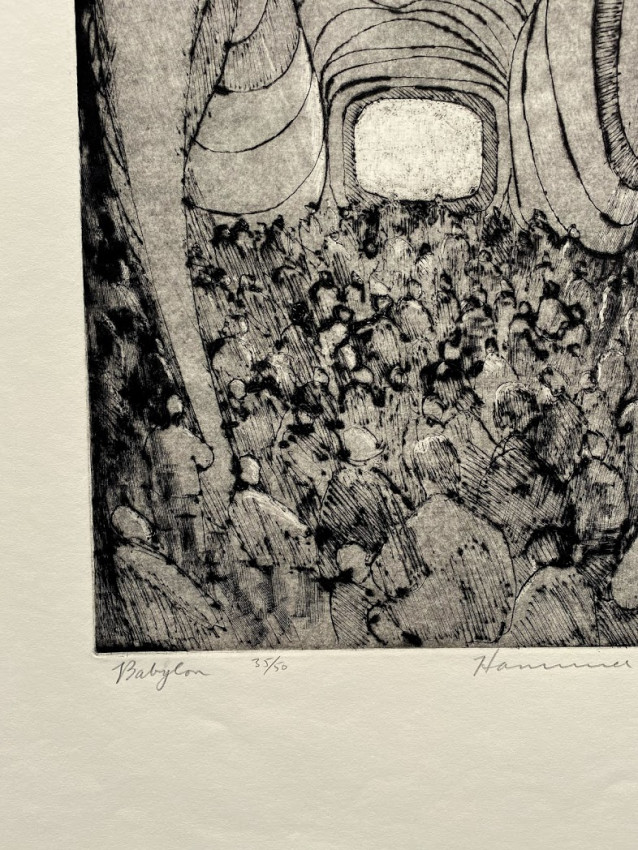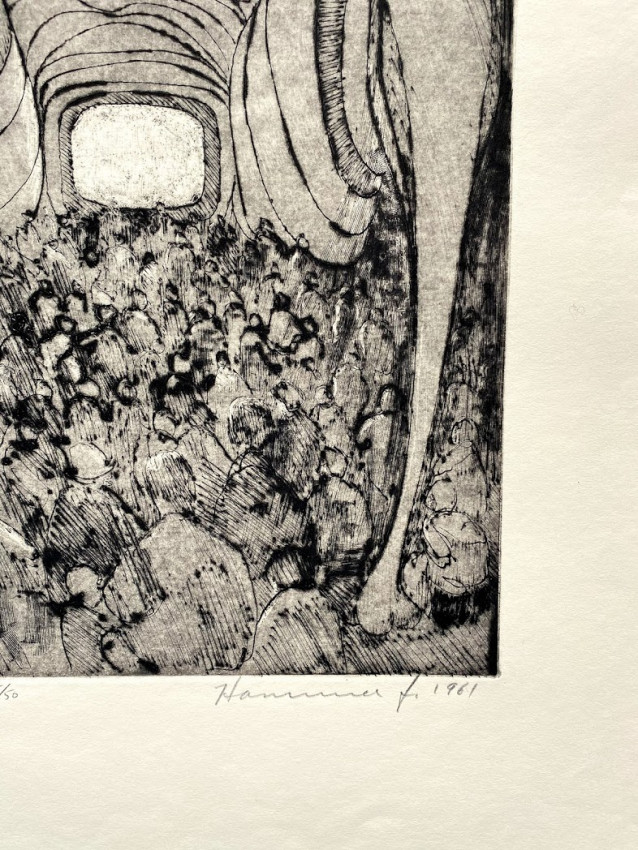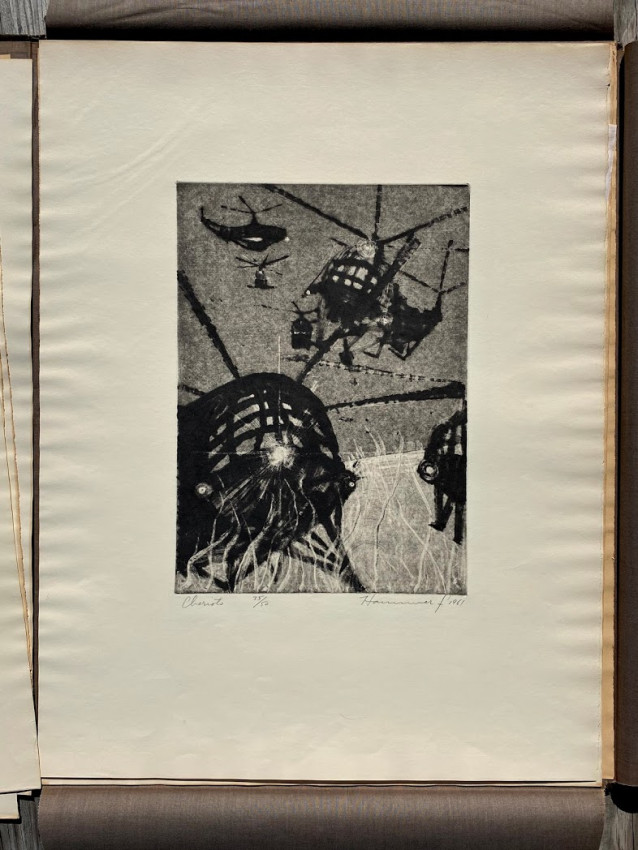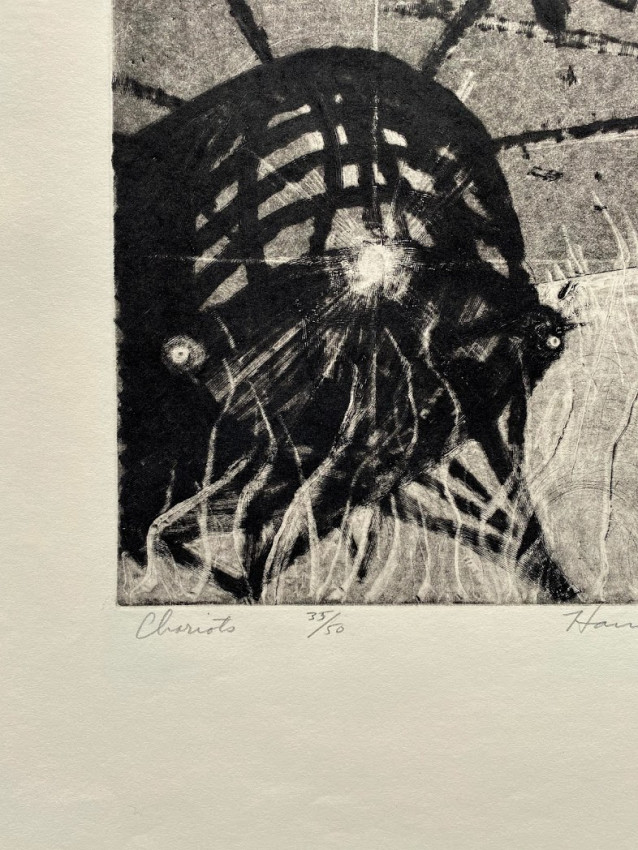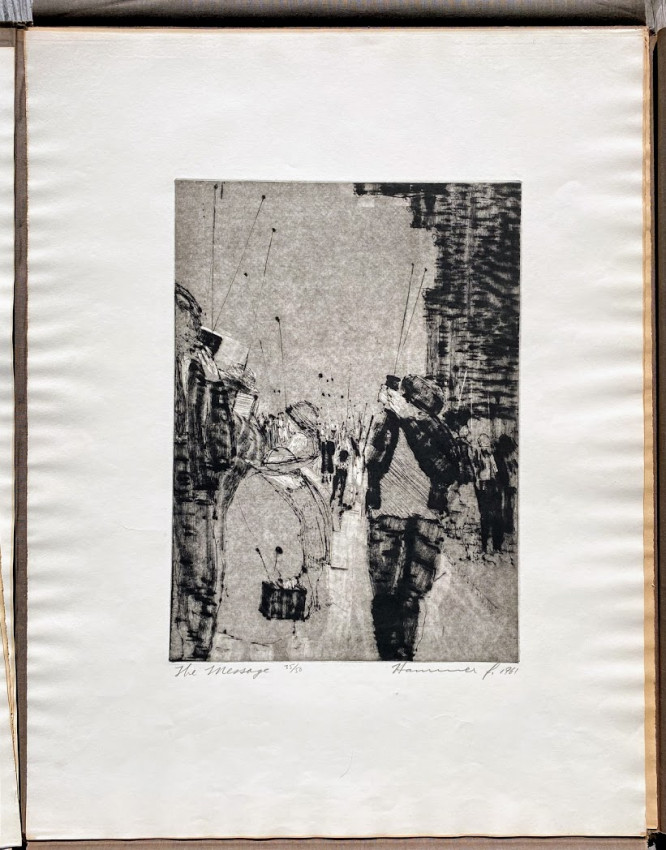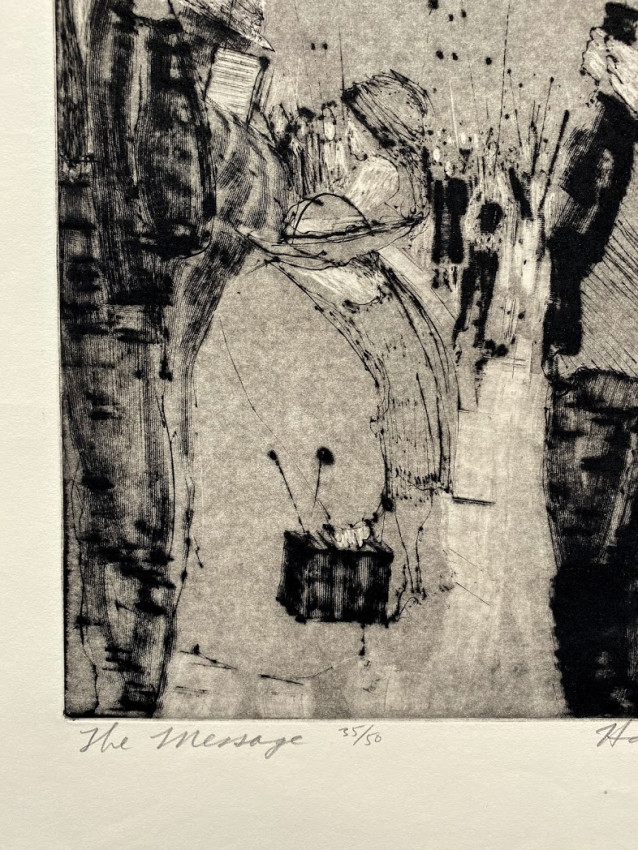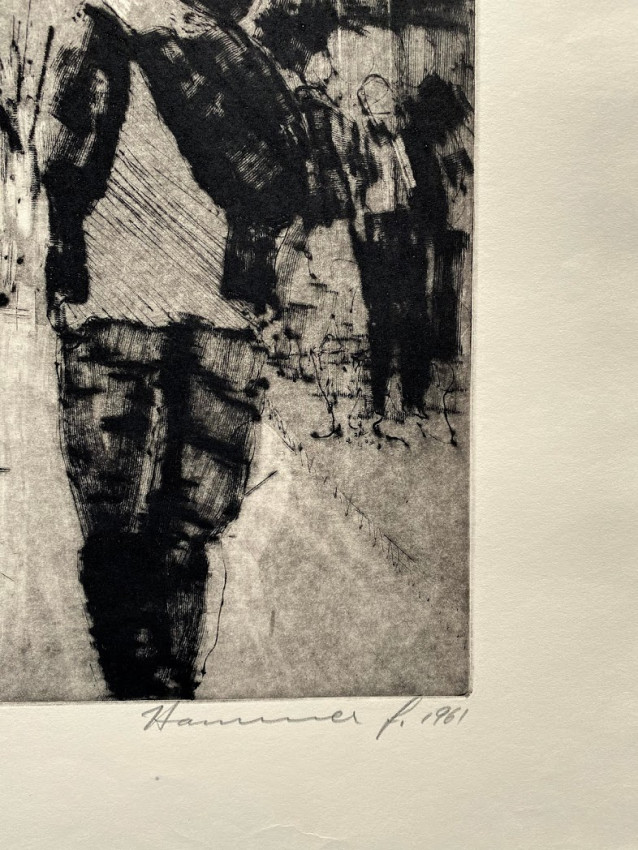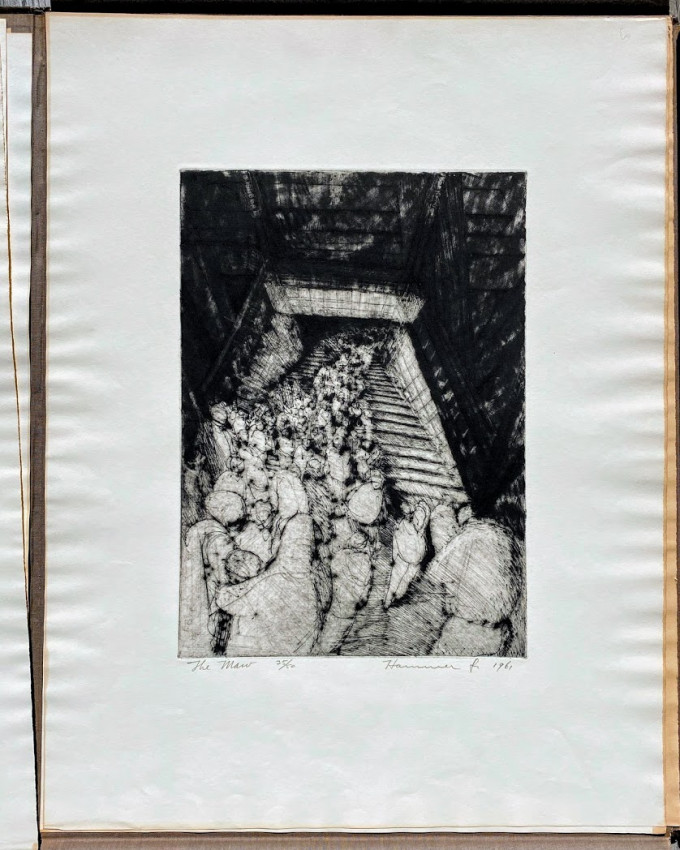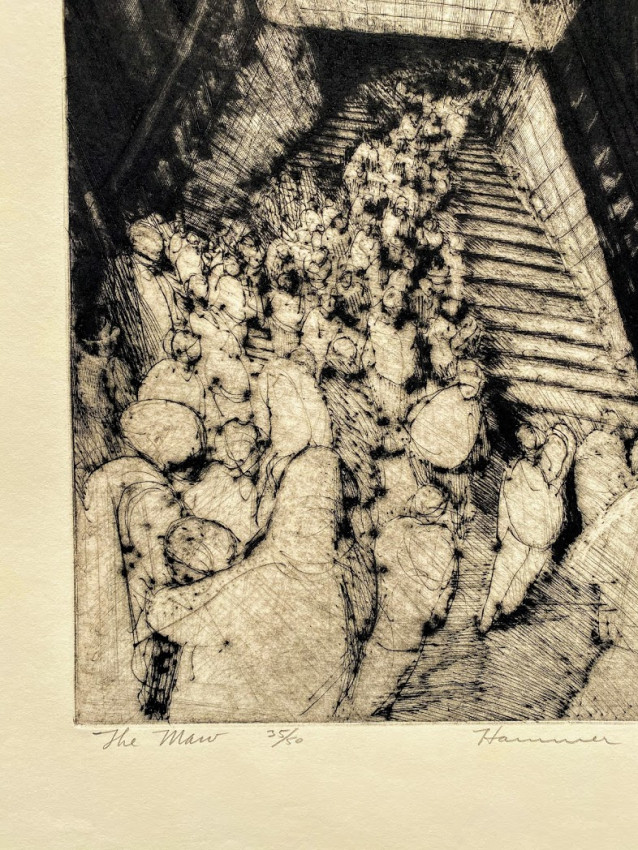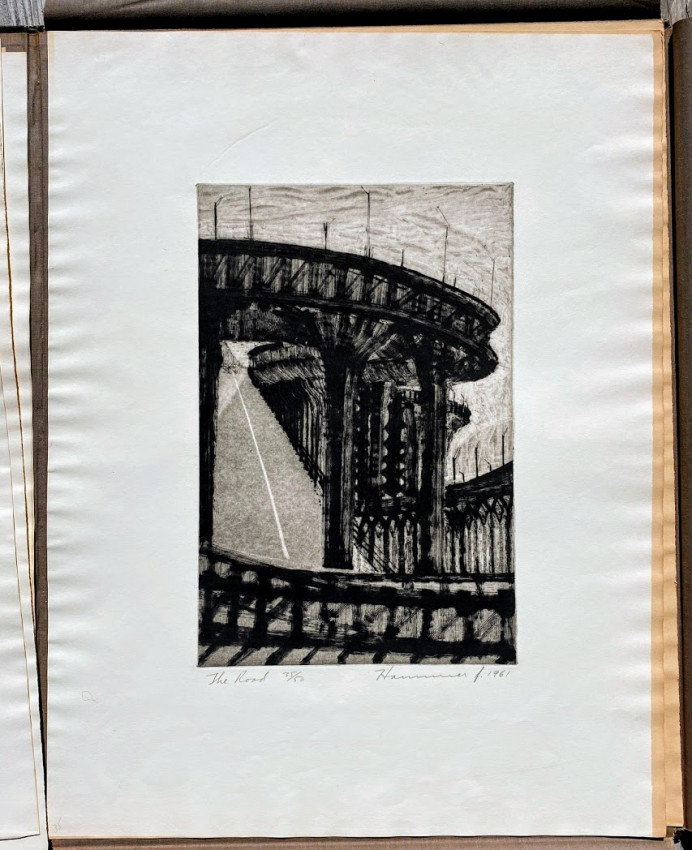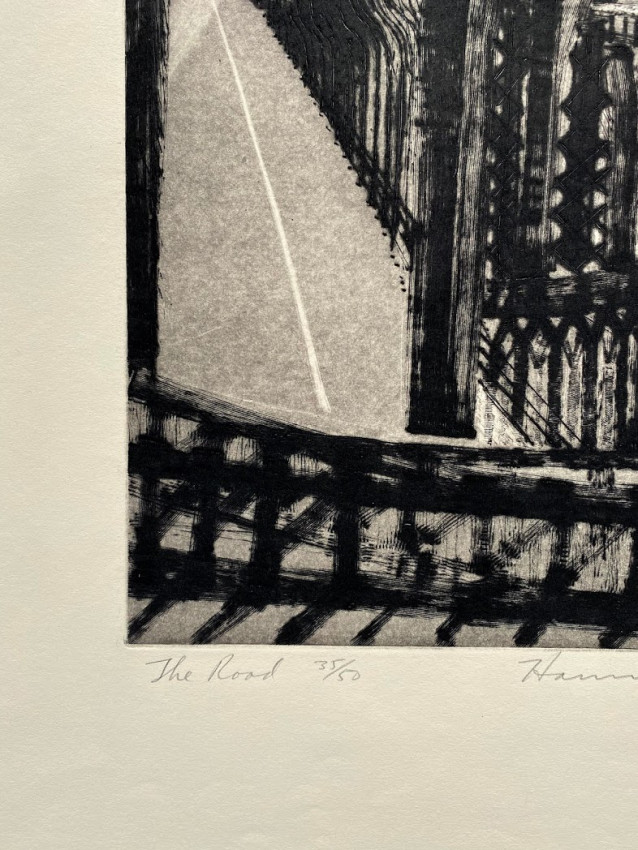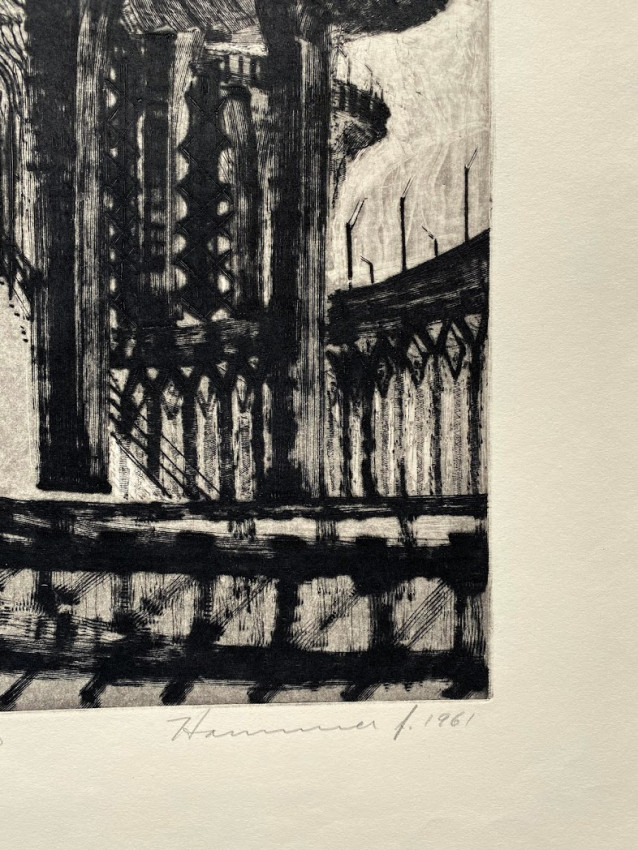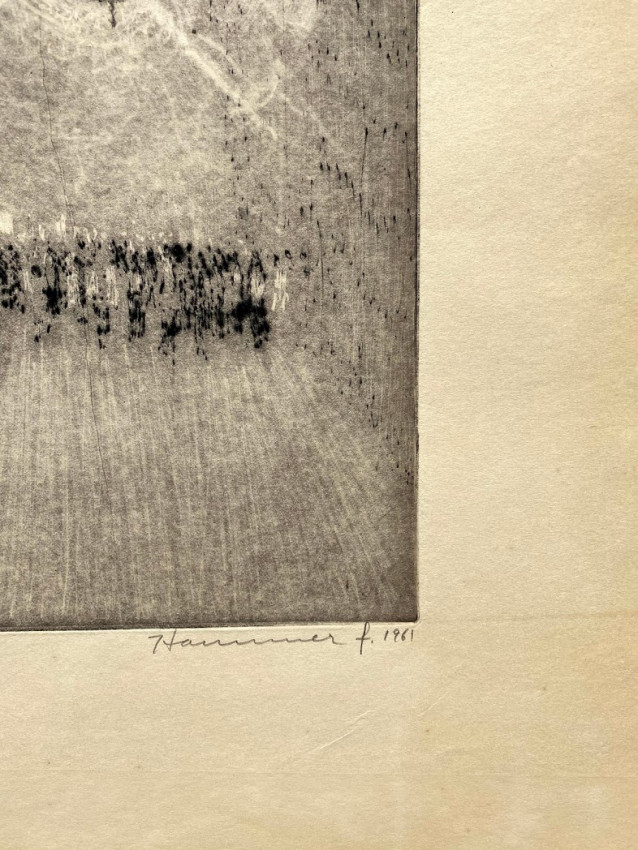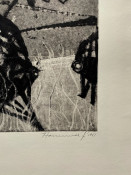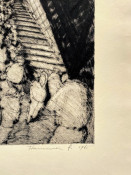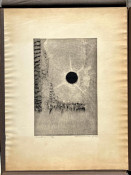GUGGENHEIM Foundation Fellowship Winner - Sid HAMMER (1926-1969, artist).
Apocalypse. [New York]: 1961. Large folio (sheet size: 26 x 20in; 660 x 508mm). 10 thermo-intaglio prints, each signed, titled and numbered, all by Hammer. (Some toning, see images). Unbound as issued within original leatherette portfolio, thermo-intaglio title label mounted on upper cover, early ‘dymo marker’ label to upper cover “3 Hammer $300” (small chip to one corner of the title, very slight rubbing to extremities of portfolio).
Very rare on the market – the edition was limited to just 50 sets. Hammer died too young and his artistic legacy is only now beginning to be re-assessed (see sidhammerproject.com).
‘Sid Hammer (July 1st, 1926 - October 19, 1969), was an American artist, writer, and political activist who invented a printmaking technique he called “thermo-intaglio.” Hammer was politically active throughout his adult life. He participated in non-violent civil disobedience and other forms of protest throughout the ‘50s and ‘60s in New York City. Hammer died in 1969 of a brain tumor at 43, after which point there was no posthumous management or exhibition of his works. The cataloguing and archiving of Hammer’s work began in the spring of 2018 and an ongoing effort to bring attention to his work is underway. … In the late 1950s Hammer began experimentation with thermo-intaglio printing, which he used to make his most recognized series, Apocalypse, in 1961.
Hammer exhibited his prints and paintings in group and solo exhibitions at ACA, AAA, Revel, and other NYC galleries, the Butler Art Institute in Youngstown, Ohio, as well as the Museum of Modern Art, Cooper Union School of Art, The New School, and The Jewish Museum. Hammer’s work resides in permanent collections of the Metropolitan Museum of Art, Museum of Modern Art, New York Public Library, and the Lessing Rosenwald Collection at the National Gallery. Hammer was awarded a Guggenheim Foundation Fellowship in 1963 for his series of ten prints titled Apocalypse. Hammer completed the first edition of fifty complete sets in 1961. The series garnered critical acclaim, and was purchased by the National Gallery, the MOMA, the Met, and The New York Public Library….
Thermo-intaglio, a modified version of intaglio printing invented by Hammer in the 1950s, involves etching on plates of polyvinyl chloride (PVC) with a range of differently shaped metal tools that he fastened to a soldering iron. Conventional intaglio printing typically uses copper or zinc plates, which are either engraved or etched.
Hammer explains the benefits of thermo-intaglio in an article entitled “A New Intaglio Technique” (February 1963, American Artist). PVC plates are much cheaper than either copper or zinc. The material is softer, which when paired with differently shaped heated metal tips of a modified soldering iron, allowed him to etch plates with a painterly, freehand approach. The resulting print plates produce extremely dark blacks, due to the depth of the lines and burrs achieved as the hot point of the soldering iron tools melt the surface of the plate. The plates are also more durable than drypoint engravings, …
Unlike metal-plate etching techniques, thermo-intaglio allowed him to easily make repeated revisions to plates without the need to chemically clean the plates, further adding to the free-form nature and speed this technique afforded him while going through the proofing and revision process. Hammer enjoyed the “directness of these plates as an expression of the artist’s intention.”
In addition to the novel hot-tool etching technique that differentiates thermo-intaglio from other engraving and etching processes, Hammer also utilized conventional drypoint, graven line, mezzotint, and other techniques as he saw fit throughout the process of making and proofing his plates. Later prints included areas where he applied homemade black gunpowder to sections of the plate, which when lit melted the surface, creating interesting and varied greytones.’ (everybodywiki).
- Binding Condition: Acceptable
- Overall Condition: Acceptable
- Size: 26 x 20in; 660 x 508mm
- Sold By: Shadowrock Rare Books
- Contact Person: Adam Langlands
- Country: United States
- Email: [email protected]
- Telephone: 001-860-248-1547
- Preferred Payment Methods: Paypal, US$ checks and wire transfers, major credit cards through paypal
- Trade Associations: AA Approved


